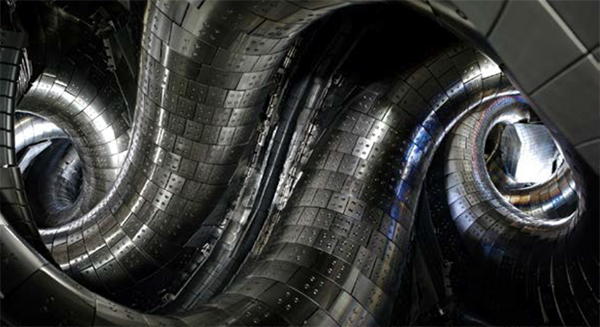
The deuterium-tritium reaction in a high-temperature plasma will be used in fusion reactors in the future. Alpha particles with 3.5 MeV energy are generated by the fusion reaction. The alpha particles transfer their energy to the plasma, and this alpha particle heating sustains the high-temperature plasma condition required for the fusion reaction. In order to realize such a plasma, which is called a burning plasma, energetic ions in the MeV range must be well confined in the plasma.
Numerical simulations predicted the favorable results of MeV ion confinement in a plasma in helical systems. These systems have the advantage of steady-state operation in comparison with tokamak systems. However, demonstration of MeV ion confinement by experiment had not been reported previously. The recent study has was performed with deuterium operation of the Large Helical Device (LHD). In deuterium plasmas, 1 MeV tritons (tritium ions) are created by deuteron-deuteron fusion reactions. The tritons have similar behavior with alpha particles that will be generated in a future burning plasma.
The research group led by Assistant Professor Kunihiro Ogawa and Professor Mitsutaka Isobe of NIFS performed MeV triton confinement experiments in LHD. The tritons confined in the plasma undergo secondary reaction and emit high-energy neutrons by fusion reaction with background deuterons (deuterium ions). The research group developed a detector for selective measurement of the high-energy neutrons to evaluate the MeV ion confinement performance. The high-energy neutrons were measured for different magnetic-field configurations. When the magnetic field axis is shifted inward, the MeV ion confinement shows better performance. The result obtained by this study proves MeV ion confinement for the first time in helical systems. This promises the alpha particle confinement required for realizing fusion energy in a helical reactor according to the researchers.
The research result is published in the IAEA journal Nuclear Fusion. The paper, entitled "Energetic ion confinement studies using comprehensive neutron diagnostics in the Large Helical Device" was chosen as a Research Highlight in the July 2019 issue of Nature Physics.
The LHD research team has also succeeded in proving that ions can be heated by plasma oscillations driven by high-energy particles. This has been confirmed by performing a large-scale simulation with a newly developed hybrid-simulation program that links calculations for plasma oscillations, high-energy particles and ions. This research will accelerate studies of plasma self-heating for realizing fusion energy. This research result was published as Wang, et al. "Simulation of energetic particle driven geodesic acoustic modes and the energy channeling in the Large Helical Device plasmas" in the IAEA journal Nuclear Fusion in August 2019.
For more on this advance see https://phys.org/news/2019-08-simulations-ion-plasma-oscillations-fusion.amp
For more information on research at NIFS visit: http://www.nifs.ac.jp/en/index.html

Inside of the Large Helical Device. High-temperature plasma is confined by the two helical superconducting coils.